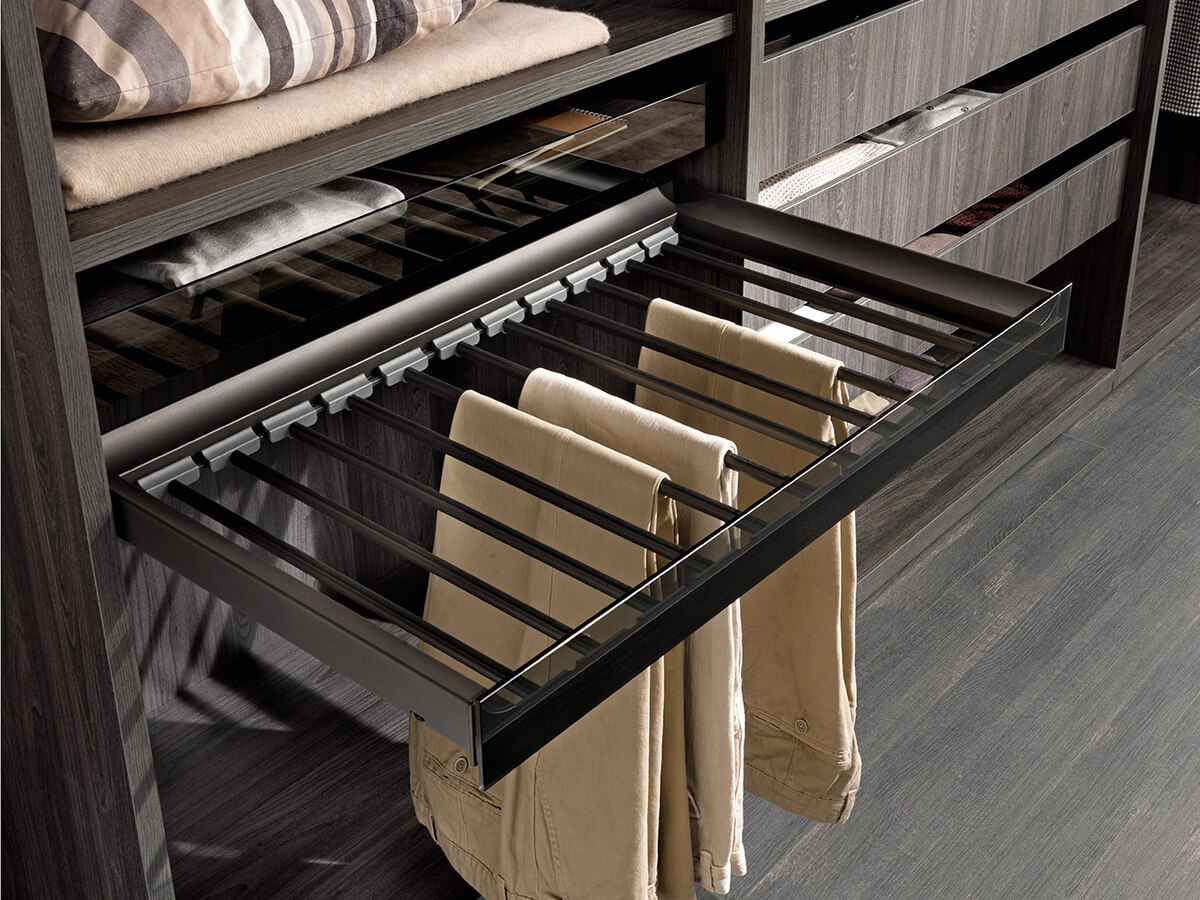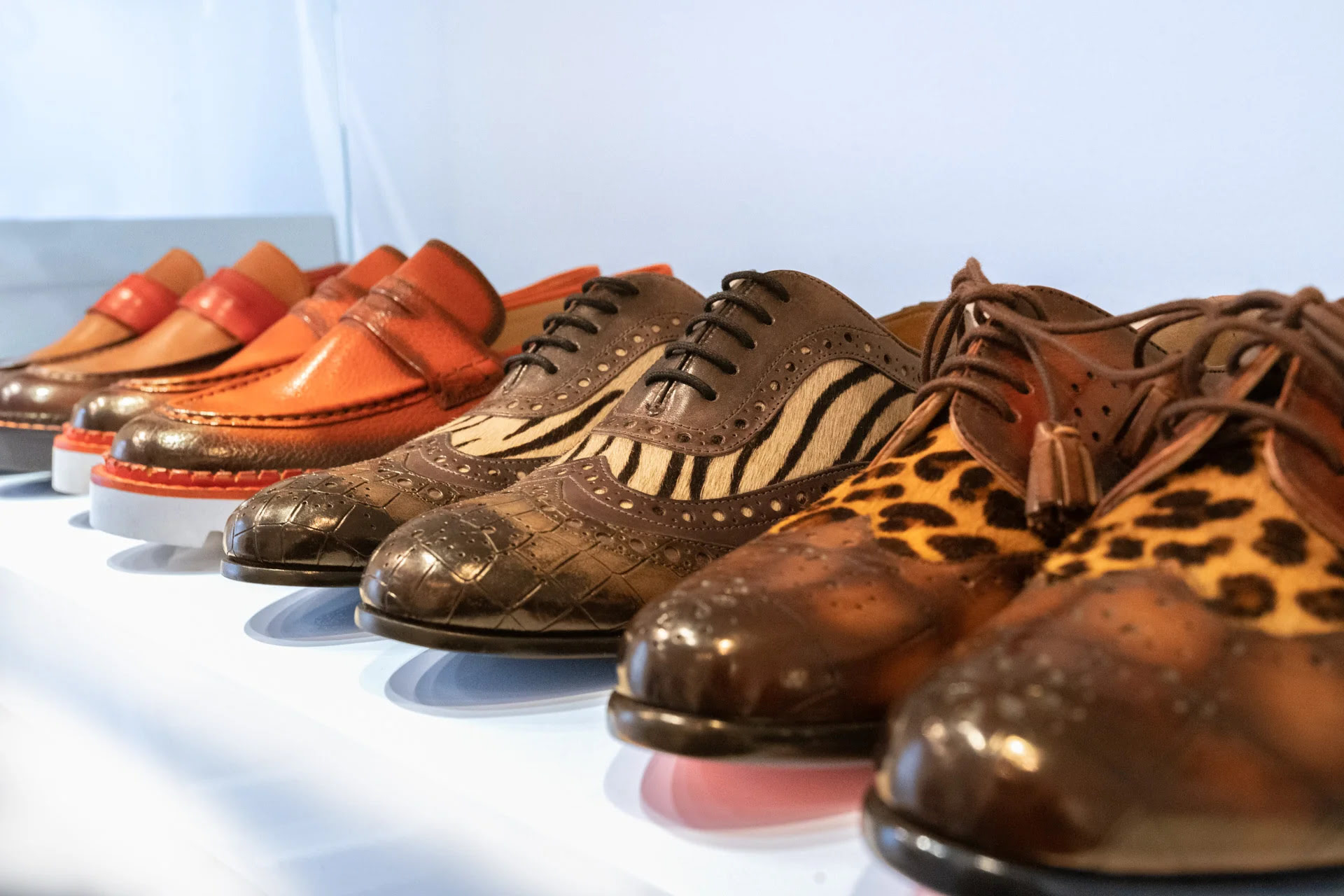Home>Home Maintenance>How To Dress Baby For Sleep In Air Conditioning


Home Maintenance
How To Dress Baby For Sleep In Air Conditioning
Modified: March 6, 2024
Ensure your baby stays comfortable and sleeps well with our tips on dressing them for sleep in air conditioning. Find the best techniques for home maintenance and temperature control.
(Many of the links in this article redirect to a specific reviewed product. Your purchase of these products through affiliate links helps to generate commission for Storables.com, at no extra cost. Learn more)
Introduction
Welcome to the world of parenthood! As a new parent, one of your top priorities is ensuring that your little bundle of joy gets a good night’s sleep. However, when the temperatures fluctuate and you rely on air conditioning to keep your home comfortable, it can be a challenge to figure out how to dress your baby for sleep. Properly dressing your baby for sleep in air conditioning is essential to ensure their comfort and safety throughout the night.
Dressing your baby for sleep involves more than just keeping them warm or cool. It involves finding the balance between ensuring they are comfortable and protecting them from potential temperature extremes. In this article, we will discuss the importance of dressing your baby for sleep, the impact of air conditioning on their sleep environment, factors to consider when dressing them for sleep in air conditioning, choosing the right sleepwear, and tips to help you dress your baby for sleep in air conditioning.
Key Takeaways:
- Dressing your baby for sleep in air conditioning is crucial for their comfort, safety, and healthy sleep routine. Consider room temperature, fabric, and layering to create an ideal sleep environment.
- Choose breathable, moisture-wicking sleepwear made from natural fabrics like cotton or bamboo. Monitor room temperature, cover extremities, and use sleep sacks for a comfortable and safe sleep in air conditioning.
Read more: How To Sleep Without Air Conditioning
Importance of dressing baby for sleep
Properly dressing your baby for sleep is crucial for their overall well-being and uninterrupted rest. Babies have a limited capacity to regulate their body temperature, making it essential for parents to help them maintain a comfortable sleep environment.
When babies are dressed appropriately for sleep, it helps them maintain a consistent body temperature, which is crucial for their health. If they are too hot or too cold, it can disrupt their sleep cycles and potentially lead to discomfort or even medical issues.
In addition to temperature regulation, dressing your baby for sleep also plays a role in promoting safe sleep practices. The American Academy of Pediatrics (AAP) recommends that babies should sleep on their backs, on a firm mattress, with a fitted sheet and no loose bedding or pillows. When dressing your baby for sleep, you must prioritize their safety by ensuring that their sleepwear is age-appropriate and free from potential hazards.
Furthermore, dressing your baby for sleep establishes a nighttime routine that signals to them that it’s time to rest. By creating a consistent sleep routine, you promote healthy sleep habits and make it easier for your baby to fall asleep and stay asleep throughout the night.
In summary, dressing your baby for sleep is not just about keeping them comfortable but is also essential for maintaining their body temperature, ensuring their safety, and establishing a healthy sleep routine. By paying attention to their sleepwear choices and creating a conducive sleep environment, you set the stage for a restful night’s sleep for your little one.
Understanding the impact of air conditioning on baby’s sleep
Air conditioning can be a lifesaver during hot summer months or in regions with a warm climate. However, it’s important to recognize that this artificial cooling system can have an impact on your baby’s sleep. Understanding how air conditioning affects your baby’s sleep can help you make informed decisions when it comes to dressing them for sleep.
One of the main ways air conditioning affects your baby’s sleep is by altering the room’s temperature. Maintaining a consistent, comfortable temperature in your baby’s sleep environment is crucial for promoting uninterrupted sleep. While you may find the cool air provided by air conditioning refreshing, it’s essential to be mindful of the temperature extremes it can create.
Excessive cooling from air conditioning can cause your baby to become too cold, disrupting their sleep and potentially leading to discomfort. On the other hand, if the air conditioning is not set properly and the room becomes too warm, it can cause your baby to overheat and have difficulty settling into a restful sleep.
Humidity control is another factor to consider when it comes to air conditioning and your baby’s sleep. Air conditioning typically reduces humidity levels, which can have an impact on your baby’s respiratory system. Low humidity can cause dryness in the airways, making your baby more susceptible to respiratory discomfort and potentially disrupting their sleep.
Noise is another aspect of air conditioning that can affect your baby’s sleep. Most air conditioning units produce a certain level of noise, which may be bothersome to some babies. This constant noise can make it difficult for your baby to fall asleep or stay asleep throughout the night.
By understanding the impact of air conditioning on your baby’s sleep, you can take steps to mitigate any potential disruptions. Monitoring the temperature and humidity levels in the room, choosing appropriate sleepwear, and using white noise machines or fans to mask the AC noise can help create a more conducive sleep environment for your baby.
Factors to consider when dressing baby for sleep in air conditioning
When dressing your baby for sleep in air conditioning, it’s important to consider several factors to ensure their comfort and safety. Paying attention to these factors will help you make informed decisions and create a sleep environment that promotes restful sleep for your little one.
Room temperature
The temperature of the room plays a crucial role in determining how you should dress your baby for sleep. Utilize a thermometer to monitor the temperature and aim for a range of 68-72 degrees Fahrenheit (20-22 degrees Celsius). Adjust the air conditioning accordingly to maintain a comfortable temperature for your baby.
Read more: When Can Baby Sleep On Soft Mattress
Season and weather
Consider the current season and weather conditions when choosing sleepwear for your baby. During hot summer months, lighter and breathable fabrics such as cotton are ideal. In colder seasons or if the air conditioning is set to a lower temperature, opt for warmer sleepwear options such as footed pajamas or sleep sacks.
Material and fabric
Choosing the right material and fabric for your baby’s sleepwear is essential. Opt for natural and breathable fabrics like cotton or bamboo, as they allow air circulation and help regulate your baby’s body temperature. Avoid synthetic materials that can trap heat and cause discomfort.
Layering
Layering is an effective technique to adjust your baby’s clothing based on the temperature fluctuations in the room. Use lightweight layers that can be added or removed as needed. This allows you to maintain a comfortable temperature for your baby, even if the air conditioning temperature changes during the night.
Sleepwear style
Consider the sleepwear style that best suits your baby’s needs. One-piece footed pajamas with covered feet are often a popular choice as they provide full-body coverage and help keep your baby warm. Sleep sacks or wearable blankets are also great options that offer warmth without the need for loose blankets, which can be a suffocation hazard.
Size and fit
Ensure that the sleepwear you choose for your baby is the right size and fit. Clothes that are too tight can restrict movement and cause discomfort, while clothes that are too loose may pose a safety risk. Opt for sleepwear that allows your baby to move freely without being overly snug or baggy.
By considering these factors, you can find the perfect balance between keeping your baby comfortable and ensuring their safety in the air-conditioned sleep environment. Remember that every baby is different, so it may take some trial and error to determine the most suitable sleepwear for your little one.
Choosing the right sleepwear for baby in air conditioning
When it comes to dressing your baby for sleep in air conditioning, selecting the right sleepwear is crucial. The ideal sleepwear should provide comfort, proper temperature regulation, and ensure your baby’s safety throughout the night. Here are some tips to help you choose the right sleepwear for your baby in air conditioning:
Consider the fabric
Choose sleepwear made from natural and breathable fabrics such as cotton or bamboo. These materials allow air to circulate around your baby’s body, preventing overheating and promoting better temperature regulation. Avoid synthetic fabrics that can trap heat and moisture, causing discomfort and potential skin irritations.
Look for sleepwear with moisture-wicking properties
Opt for sleepwear that has moisture-wicking properties. This feature helps to draw moisture away from your baby’s body, keeping them dry and comfortable throughout the night. It is especially important in air-conditioned environments, as it helps prevent your baby from feeling clammy or sweaty.
Choose the right weight
Select sleepwear with an appropriate weight to match the temperature in the room and the cooling effect of the air conditioning. During warmer months or if the air conditioning is set to a higher temperature, choose lightweight sleepwear. In cooler temperatures or if the air conditioning is set at a lower temperature, opt for slightly thicker sleepwear or add a breathable layer for added warmth.
Consider sleepwear with built-in temperature regulation features
Some sleepwear brands offer innovative designs with built-in temperature regulation features. These sleepwear items are designed to adapt to your baby’s body temperature, keeping them cool when it’s warm and warm when it’s cool. Look for sleepwear with moisture-wicking or thermal-regulating technologies to ensure your baby’s comfort throughout the night.
Ensure proper fit and sizing
Choose sleepwear that fits your baby well. Avoid sleepwear that is too tight or constrictive, as it can restrict movement and make your baby uncomfortable. Loose sleepwear also poses a safety risk, as it can increase the chances of your baby getting tangled or suffocated. Opt for sleepwear that allows for easy movement and provides a comfortable fit.
Consider sleepwear with safety features
Look for sleepwear that meets safety standards and has additional safety features. Sleepwear with fire-resistant properties can provide added peace of mind. Additionally, sleepwear with covered zippers, flat seams, and no loose threads or buttons reduces the risk of irritation or injury during sleep.
By considering these factors and taking the time to choose the right sleepwear, you can ensure that your baby remains comfortable, safe, and well-regulated in an air-conditioned sleep environment.
Tips for dressing baby for sleep in air conditioning
Dressing your baby for sleep in air conditioning requires careful consideration to ensure their comfort and safety throughout the night. Here are some useful tips to help you dress your baby for sleep in an air-conditioned environment:
Monitor the room temperature
Use a reliable thermometer to monitor the temperature in the room where your baby sleeps. Aim for a comfortable temperature range of 68-72 degrees Fahrenheit (20-22 degrees Celsius). Adjust the air conditioning accordingly to maintain a consistent temperature throughout the night.
Consider layering
Layering is an effective technique for dealing with variable temperatures in an air-conditioned room. Start with a lightweight onesie or sleep gown as a base layer and add a sleep sack or wearable blanket for additional warmth if needed. This allows you to easily adjust the number of layers based on the room temperature fluctuations.
Use breathable fabrics
Opt for sleepwear made from natural, breathable fabrics such as cotton or bamboo. These materials allow air to circulate around your baby’s body, preventing overheating and promoting better airflow. Avoid synthetic fabrics that can trap heat and moisture, leading to discomfort.
Read more: How To Store Baby Items For Next Baby
Choose sleepwear with easy access for diaper changes
Look for sleepwear that has convenient access for diaper changes, such as snaps or zippers that go all the way down. This makes nighttime diaper changes easier and minimizes disturbance to your baby’s sleep. Avoid sleepwear with too many buttons or complicated closures that can be time-consuming and disruptive during diaper changes.
Keep their extremities covered
Babies tend to lose heat from their extremities, such as hands and feet, faster than adults. Ensure that their hands and feet are covered to help them retain heat. Look for sleepwear with built-in hand and foot covers or use separate socks and mittens to keep these areas warm.
Avoid overdressing
While it’s important to keep your baby warm in an air-conditioned room, be cautious not to overdress them. Overdressing can lead to overheating and discomfort, potentially disrupting their sleep. Check your baby’s neck, chest, or back to see if they feel clammy or sweaty, which may indicate they are too warm.
Use a sleep sack or wearable blanket
Sleep sacks or wearable blankets are a safe alternative to loose blankets. They provide warmth and security without the risk of the blanket covering your baby’s face. Look for sleep sacks that are appropriate for the room temperature and your baby’s age to ensure the right level of insulation.
Read also: 14 Best Baby Toilet for 2025
Consider the room’s humidity level
Air conditioning can lower the humidity in the room, which can cause dryness, especially in your baby’s nasal passages. Use a humidifier to add moisture to the air and prevent dryness. This can help alleviate discomfort and promote better breathing and sleep for your baby.
By following these tips, you can ensure that your baby is appropriately dressed for sleep in an air-conditioned room, creating a comfortable and safe sleep environment for them to rest peacefully throughout the night.
Conclusion
Dressing your baby for sleep in air conditioning requires attention to detail and consideration for their comfort, safety, and optimal sleep environment. By understanding the impact of air conditioning on your baby’s sleep and considering factors such as room temperature, weather, fabric, and sleepwear style, you can make informed choices to promote restful sleep.
Choosing the right sleepwear that is made from breathable materials, has moisture-wicking properties, and provides appropriate insulation for the room temperature will help regulate your baby’s body temperature and prevent discomfort. Layering their sleepwear allows you to easily adjust their clothing based on temperature fluctuations throughout the night, ensuring they stay comfortable without getting too hot or too cold.
It is essential to monitor the room temperature using a thermometer and make necessary adjustments to the air conditioning to maintain a consistent and comfortable sleep environment. Additionally, keeping your baby’s extremities covered, using sleep sacks or wearable blankets, and considering the room’s humidity level contribute to their overall comfort during sleep in air conditioning.
Remember to prioritize your baby’s safety by choosing sleepwear that fits well, adheres to safety standards, and avoids any potential hazards such as loose blankets or excessive layers. Create a bedtime routine that includes dressing your baby for sleep in air conditioning, signaling to them that it’s time to rest and promoting healthy sleep habits.
By following these tips and being attentive to your baby’s needs, you can ensure that they have a peaceful and restorative sleep in an air-conditioned environment. Keep in mind that every baby is unique, so it may take some trial and error to find the perfect combination of sleepwear and room conditions that work best for your little one.
Ultimately, dressing your baby for sleep in air conditioning is about finding a balance between comfort, safety, and appropriate temperature regulation. With proper attention and care, you can create an ideal sleep environment that will contribute to your baby’s well-being and promote restful and uninterrupted nights of sleep.
Frequently Asked Questions about How To Dress Baby For Sleep In Air Conditioning
Was this page helpful?
At Storables.com, we guarantee accurate and reliable information. Our content, validated by Expert Board Contributors, is crafted following stringent Editorial Policies. We're committed to providing you with well-researched, expert-backed insights for all your informational needs.









